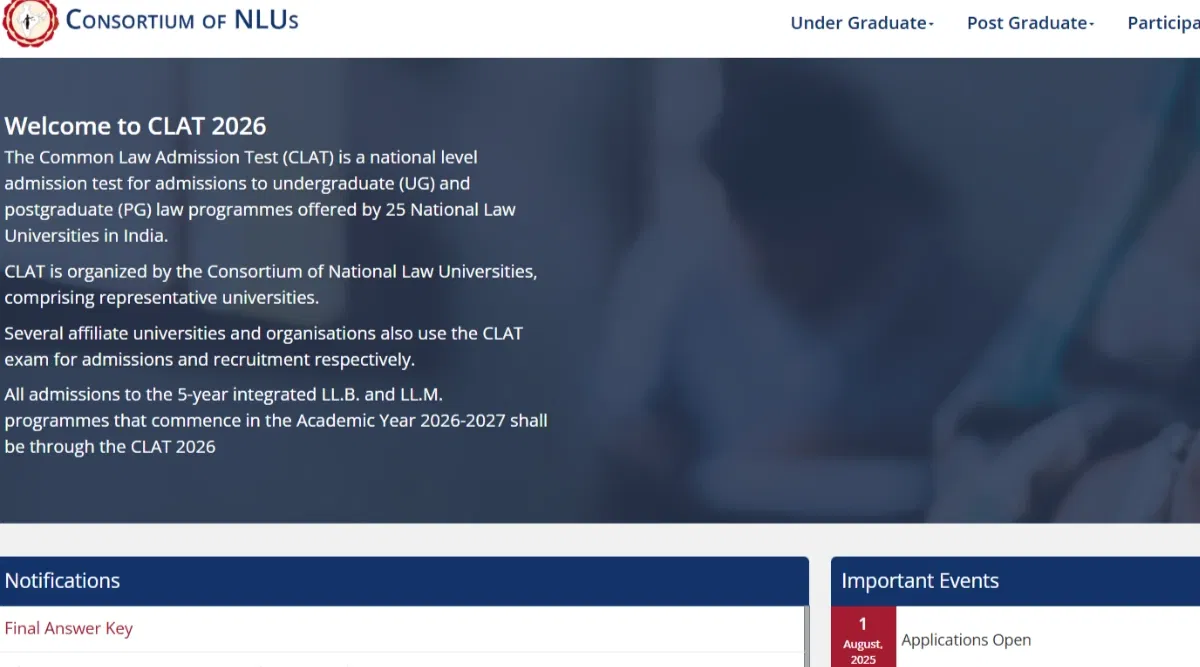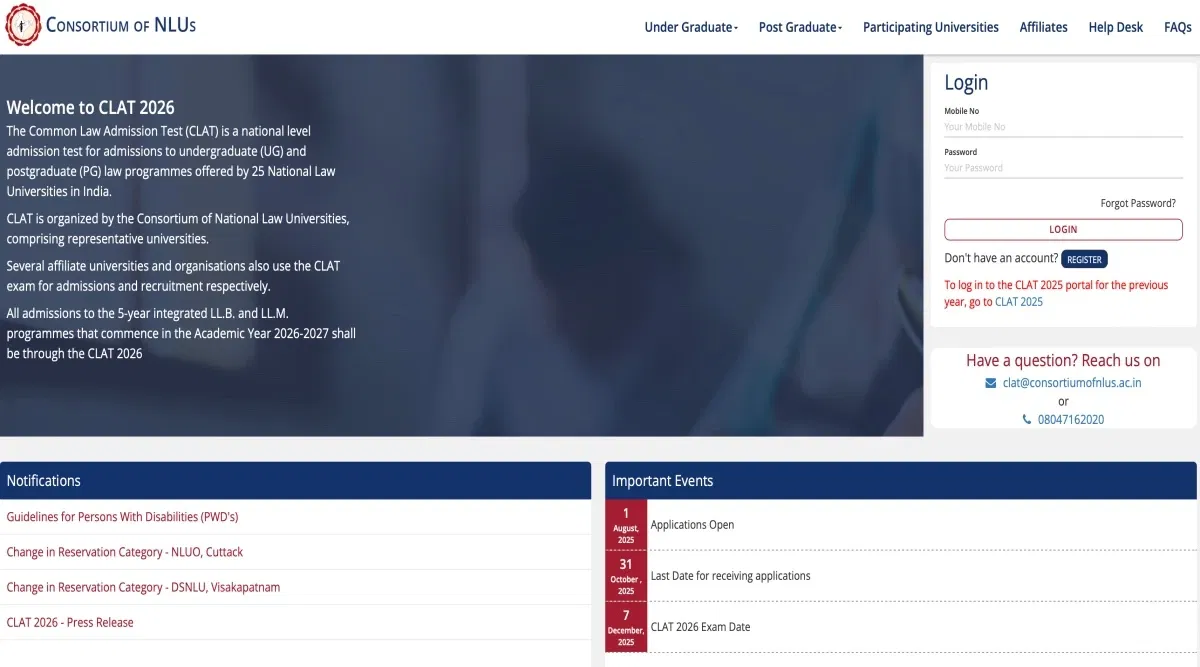To improve logical reasoning for CLAT 2025, it is critical, accounting for 20% of the exam. It assesses a person's logical thinking skills and reasonableness, which is an important talent for lawyers who win cases using logical arguments. CLAT 2025 exam will include 22-26 multiple-choice questions in the logical reasoning part.
Table of Contents
CLAT 2025 logical reasoning carries a 20% weightage in the question paper and aims to assess candidates' comprehension and reasoning ability. To improve logical reasoning for CLAT 2025, candidates must solve puzzles and activities that need logical application will help them develop their analytical and critical thinking skills.
Practice CLAT previous year's question papers and practice papers to become acquainted with the exam format and enhance problem-solving speed. CLAT logical reasoning section is one where candidates cannot afford to lose marks for lack of practice. The component evaluates candidates' analytical ability rather than their theoretical knowledge. It can only be mastered by extensive practice and knowledge.
This post aims to help you prepare successfully for the CLAT 2025 logical reasoning part by providing insights into major CLAT 2025 books, topics, and best strategies.
Improving the Logical Reasoning Section in the CLAT 2025
In CLAT 2025, the logical reasoning section assesses your ability to think critically and logically about a problem. It determines if you can detect assumptions and draw inferences based on the information presented in a problem statement.
- Understand the CLAT syllabus 2025 for logical reasoning topics and focus on practising the problems and topics covered in it.
- CLAT Logical Reasoning 2025 measures your ability to comprehend complicated arguments, see patterns, and develop logical conclusions.
- To begin preparing, become familiar with the types of questions included in CLAT papers and practice answering them regularly.
- To ensure optimal preparation, set aside at least one hour every day for logical thinking in your study plan. Improve your results by focusing on analytical and critical reasoning.
- This section typically consists of 22-26 passage-based questions. These questions assess how well you understand arguments and draw conclusions.
- To effectively attain your goals, organize your CLAT exam preparation by developing and adhering to a study plan.
Also Read: Critical Reasoning For CLAT 2025
Tips to Improve for CLAT Logical Reasoning 2025
A strategic strategy is required when preparing for the CLAT's logical reasoning areas. This will efficiently address the wide variety of topics and inquiry types. Here are thorough planning strategies, including some new insights:
Understand the Question Types
Begin by learning about the different types of questions included in the Logical Reasoning section. Consider analytical thinking, logical deductions, syllogisms, logical connectives, and critical reasoning. Understanding the subtleties of each question type will help you approach them intelligently.
Develop Analytical Skills
Logical reasoning questions frequently ask applicants to analyze difficult events and derive logical conclusions. Improve your analytical skills by practicing critical thinking, problem-solving, and pattern detection exercises. To improve your analytical skills, try activities like puzzle solving, strategic games, and debates.
Practice Regularly
Consistent practice is essential for understanding logical reasoning topics for CLAT. Use your daily study time to practice questions from various areas. Make use of CLAT exam preparation materials, online resources, and practice tests. This will introduce you to a variety of question styles and difficulty levels.
Focus on Time Management
Keep in mind the CLAT exam's time limits. Creating good time management tactics for the logical reasoning part is critical. Practice answering questions within the time limit to improve your speed and accuracy. Furthermore, practice prioritising questions depending on their difficulty level and allocating time accordingly.
Identify Patterns and Techniques
As you practice, keep an eye out for common CLAT exam patterns 2025 and methods in logical reasoning questions. Recognize prevalent trends and comprehend the fundamental concepts governing diverse question kinds. This will allow you to approach them more confidently throughout the exam.
Review Mistakes
Mistakes are invaluable learning opportunities. Practice sets or take simulated tests on occasion. After you've finished them, go over your answers and look for any mistakes or areas where you may improve. Analyze the reasoning behind each question to see why some options are correct or incorrect. This process will allow you to learn from your mistakes and improve your performance.
Stay updated
Keep track of any modifications or adjustments to the CLAT 2025 syllabus and exam pattern. Stay up to date on recent developments in logical thinking and current events, as they may have an impact on the content of exam questions.
Seek Guidance as Needed
During the preparation process, you may experience challenges with specific topics or questions. If this happens, don't be afraid to seek help from mentors, professors, or internet forums. Join study groups or online forums to debate difficult subjects, share tactics, and benefit from other people's experiences.
Implement these extensive preparation tactics, along with persistent practice and dedication. This will help you improve your logical reasoning skills and perform better on the CLAT exam.
Also Read: How To Balance Daily Routine For CLAT 2025 Preparation?
CLAT 2025 Logical Reasoning Syllabus & Pattern
Logical Reasoning is one of the most important areas of CLAT 2025, accounting for 20% of the total weightage. CLAT test will include between 28 and 32 Logical Reasoning questions. The questions will be preceded by brief 300-word reading portions.
| Particulars | CLAT Logical Reasoning Highlights |
| Type of questions | Passage-based MCQs |
| Number of reading passages | 4-6 comprehension passages of 300 words each |
| Total Questions | 28-32 |
| Total marks | 28-32 |
| Negative marking | -0.25 for incorrect answer |
| Approximate weightage in CLAT exam | 20% |
CLAT Logical Reasoning Important Topics
CLAT logical reasoning part normally has 22 to 26 questions, accounting for 20% of the entire CLAT question paper. This part has sections of around 300 words each, followed by multiple-choice questions (MCQs) based on the excerpts.
Some of the important topics to prepare for CLAT Logical Reasoning 2025 include:
- Arrangements
- Blood Relations
- Statements and Assumptions
- Seating Arrangement/Puzzle Test
- Assertions and Reasoning
- Circular Arrangements
- Coding Decoding
- Clocks and calendars
- Syllogisms
- Number Series
- Logical Sequences
- Arguments & Conclusions
- Puzzles
- Direct sense
- Analogies
- Connectives
Also Read: How to Attempt Legal Reasoning Questions in CLAT 2025?
CLAT Logical Reasoning Preparation 2025: Quick Tips
Check out the following key CLAT 2025 Logical Reasoning preparation tips:
- Create a thorough preparation plan: Try to devote at least one hour of your daily time to the preparation of the Logical Reasoning part. Create a list of topics you want to cover and set a deadline for yourself to complete the Logical Reasoning course by that date.
- Do not mug up; rather, practice: While preparing for the CLAT Logical Reasoning section, attempt to grasp the concepts and logic rather than memorizing them. Once you've grasped the fundamental concepts, practice the questions linked to a certain topic as much as possible.
- Begin with the easiest subjects and questions: Logical Reasoning is one section where understanding the underlying reasoning will allow you to rapidly solve the questions. To maintain your morale and confidence, begin preparing for themes in which you are most comfortable, eventually on to more difficult topics.
- Learn shortcuts for solving questions: To solve Logical Reasoning questions more quickly, you must understand specific shortcuts. Shortcuts can include creating a mind map, graphic, and so forth. Learning and applying shortcuts is very crucial for courses like Syllogisms and Blood Relations.
- Attempt previous year CLAT question papers: Attempting CLAT previous year question papers is critical for understanding the difficulty level and types of questions asked in the exam. So, once you've finished your CLAT Logical Reasoning syllabus, try to tackle as many question papers as possible. Candidates are encouraged to concentrate on answering CLAT mock tests 2025 and the question papers, which are based on the revised exam format.
- Time management is especially critical while tackling Logical Reasoning tasks, which can be complex and time-consuming.
- Identify your strengths and weaknesses: After taking a CLAT question paper, it is critical to analyze the errors you make in the Logical Reasoning section and then work on your shortcomings to make your strengths stronger.
- Revision: Continue to revise the concepts and topics you have already studied in order to maintain your understanding.









































POST YOUR COMMENT